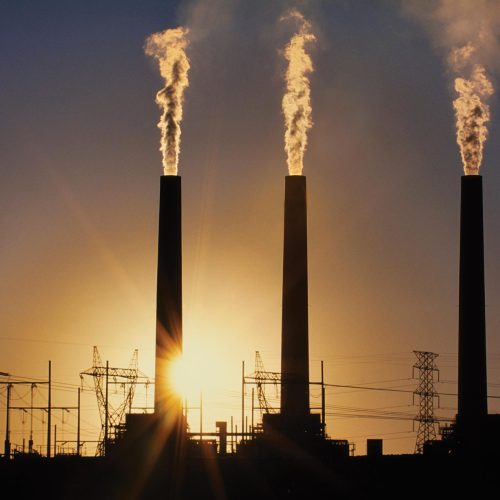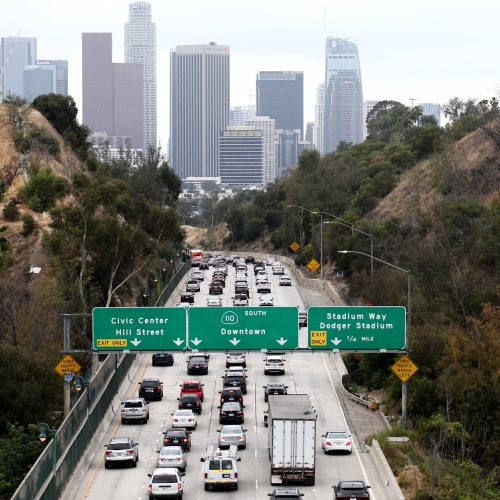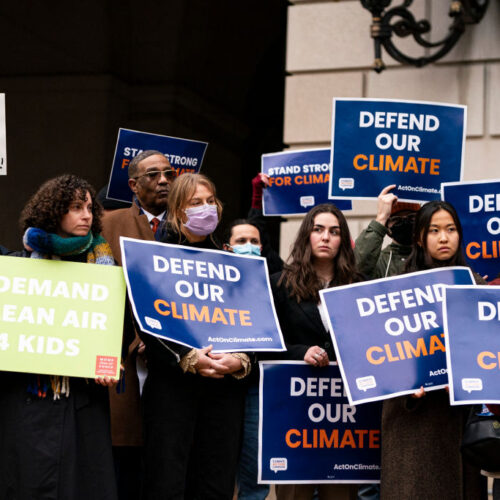Trump’s Attack on ‘Woke Investing’ Is Silencing Climate-Conscious Shareholders
Shifting political and regulatory winds have led to fewer shareholder resolutions on environmental and social issues.


As President Donald Trump signed a slew of executive orders Tuesday aimed at keeping coal power alive in the United States, he repeatedly blamed his predecessor, Democrats, and environmental regulations for the industry’s dramatic contraction over the past two decades.
But across the country, state and local officials and electric grid operators have been confronting a factor in coal’s demise that is not easily addressed with the stroke of a pen: its cost.
For example, Maryland’s only remaining coal generating station, Talen Energy’s 1.3-gigawatt Brandon Shores plant, will be staying open beyond its previously planned June 1 shutdown, under a deal that regional grid operator PJM brokered earlier this year with the company, state officials, and the Sierra Club.


© US Global Change

For two decades, farmer John Burk has been working to improve the soil on his farm in Michigan, taking a few extra steps to make it more resilient and productive. His efforts have paid off.
“When we have the dry, hot summers or lack of rainfall, our crops can sustain the dry spells better. We don’t have huge yield decreases,” Burk said. “And when it rains and we have the freak storms, like it seems to do so much now, we don’t have the ponding and all the runoff.”
An added bonus: He needs less fertilizer, a major operating expense.


© https://www.gettyimages.com/detail/photo/wind-farms-and-agricultural-production-royalty-free-image/2183669700

Global sea levels rose faster than expected last year, largely due to warming ocean temperatures, a new NASA analysis found.
As seawater creeps further into coastlines, salt threatens to pollute the freshwater reserves that people depend on. But this brine isn’t just coming from the ocean: New research shows freshwater ecosystems are facing widespread dual threats of salt contamination from the sea and land, made worse by climate change.
Humans are a salty species, using the mineral for a vast number of reasons—from de-icing the roads during snowstorms to seasoning food.


© SOPA Images



On Wednesday, a ranking member of the Senate Environment and Public Works Committee accused the Environmental Protection Agency (EPA) of "misusing law enforcement" to claw back climate funds and "humor" Donald Trump’s "vindictive political whims."
In a letter to Attorney General Pam Bondi and FBI Director Kash Patel, Senator Sheldon Whitehouse (D-R.I.) requested information about a supposed criminal investigation into the EPA's $27 billion Greenhouse Gas Reduction Fund (GGRF).
Whitehouse alleged that there was no basis to freeze the funding. He claimed that Bondi and Patel "reverted to a pretextual criminal investigation to provide an alternative excuse to interfere" after "EPA Administrator Lee Zeldin announced via social media that he had 'found' $20 billion in EPA funds at Citibank and falsely suggested that the use of a financial agent agreement—a commonly used financial tool that presidential administrations have used for centuries—was improper."


© pijama61 | DigitalVision Vectors


A document that was first issued in 2009 would seem an unlikely candidate for making news in 2025. Yet the past few weeks have seen a steady stream of articles about an analysis first issued by the Environmental Protection Agency (EPA) in the early years of Obama's first term: the endangerment finding on greenhouse gases.
The basics of the document are almost mundane: Greenhouse gases are warming the climate, and this will have negative consequences for US citizens. But it took a Supreme Court decision to get written in the first place, and it has played a role in every attempt by the EPA to regulate greenhouse gas emissions across multiple administrations. And, while the first Trump administration left it in place, the press reports we're seeing suggest that an attempt will be made to eliminate it in the near future.
The only problem: The science in which the endangerment finding is based on is so solid that any ensuing court case will likely leave its opponents worse off in the long run, which is likely why the earlier Trump administration didn't challenge it.


© Mario Tama/Getty Images


In the past decade, Americans have become increasingly aware that climate change is harming the health of people in the US, according to a new survey.
The survey, which was conducted in December and released Friday, also shows increased trust in physicians, climate scientists, federal agencies like the Centers for Disease Control and Prevention and the Environmental Protection Agency, local public health departments and the World Health Organization for providing information about the health harms of global warming.
These sources of information are under threat: President Donald Trump’s administration has proposed cutting most of the EPA’s budget and initiated mass firings at the CDC, taken down climate and health information from government websites, frozen or revoked funding for some climate research and interventions, stalled environmental justice initiatives, and proposed rescinding a 16-year-old federal finding that mandates government action on greenhouse gases. Trump also withdrew the US from the World Health Organization and the Paris climate accord.


© Al Drago via Getty

On May 16, 2024, a powerful derecho swept through Houston, killing seven people and causing significant damage to several of the city's towering skyscrapers. Those buildings were constructed to withstand much stronger hurricane-force winds up to 67 meters per second, as one would get with a Category 4 hurricane. The derecho's winds peaked at 40 meters per second, well below that threshold. And when Hurricane Beryl hit Houston that July with roughly comparable wind speeds of 36 meters per second, the damage wasn't nearly so severe. Why would that be the case?
Engineers at Florida International University (FIU) in Miami think they've found the answer, according to a new paper published in the journal Frontiers in Built Environment. "We show that a type of highly localized strong winds called ‘downbursts,’ which were generated during the May derecho, can significantly impact tall buildings and facades due to their unique characteristics in comparison to hurricanes,” said co-author Amal Elawady. This is particularly the case for skyscrapers that are close together, creating a "wind-channeling" interference effect that increases pressure on walls and windows.
One might assume that hurricanes and derechos are similar in that they both produce markedly intense winds, but the origin and characteristics of those winds are very different, per the authors. Hurricanes are vast tropical storms that form over warm ocean waters and affect large areas, usually lasting for several days, accompanied by heavy rains, storm surges, waves, and yes, high winds. By contrast, derechos and downbursts are much more localized convective systems, producing hurricane-force winds but over a much smaller area and shorter period of time.


© National Weather Service/Public Domain